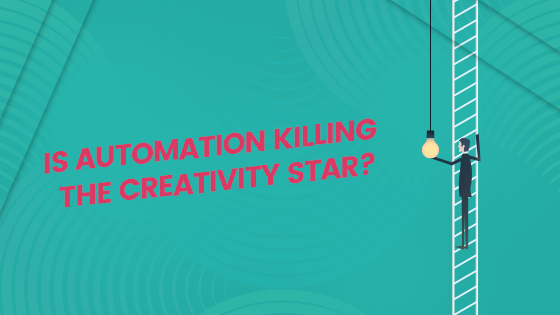






We can’t deny that automation has changed the world around us, with many ‘creative’ sectors already feeling threatened by the ‘rise of the machines’.
Today, it doesn’t seem obscure that a computer can create a masterpiece that would have Picasso screaming in rage or a symphony that would be music to even Beethoven’s ears.
With Facebook, Amazon, and Google’s Chief Honchos answering to Congress, it got us thinking about how technology, and in particular, automation, is creeping more and more into the role of marketing. But should we be worrying more about its impact on creativity than about it taking our jobs?
Creativity has always been core to the value of marketing. From producing rich media that wows to finding new innovative solutions through creative problem solving, creativity is about understanding people’s emotions and wrapping them in content that moves us.
It’s not all doom and gloom, nor should it be a battle. Automation can be our best friend, enabling us to replicate laborious tasks and processes at an unbelievable speed. Of course, it’s not limited to mere data processing, it can be argued that computers are even starting to step into the land known as “creative”.
Marketers need to consider how machines can take the laborious tasks, allowing us to spend time on more creative aspects of the role. Maybe then it’ll alleviate our fear of machines taking our jobs.
Receptive? Revolutionist? Or somewhere in between?
Regardless of your predisposition to automation, it can’t be disputed that it’s revolutionised marketing; allowing smaller brands to compete with the big boys in their industry, a pipe dream that happened overnight.
But at what cost to creativity?
In our experience, it seems firms benefitting the most from automation are ensuring creativity stays core to what they do. They’re pushing context, personalisation (true personalisation), relevance, and empathy to the forefront, with automation stepping in as the supporting act, as a delivery mechanism to help showcase their creativity.
While the exact numbers are constantly rising, research suggests that up to 70% of businesses are utilising marketing automation across their departments.
But with the rise of automation comes an increased level of attention from business leaders as to the ‘stats’ and ‘figures’ which often help marketers quantify their activity. Of course the numbers matter, but they should be treated as an indication rather than the whole story.
“Automation” isn’t actually automated, is it?
As an agency, we drink the kool-aid of marketing automation. But we’ve seen instances of it having negative impacts on an organisation’s marketing; fostering an attitude of process over creativity, poorly considered workflows or lazy setup, the ramifications which go far beyond the ‘Dear <First Name>’ mistake we’ve all fallen foul of.
Automation isn’t plug and play, sit back, and reap the rewards, it needs investment, it needs the human brain. It requires a creative marketer to consider the parameters, to think about the rules and the boundaries, the workflows, and the interactions. Someone to play the role of ‘the customer’.
Computers treat everyone the same, as marketers we don’t, nor should we! What makes marketing so powerful is our ability to put ourselves in the shoes of our audience and interpret their feelings, emotions, frustrations, and start to think about how they can be influenced by marketing.
Our approach: computers see 0s & 1s, we see people
Our clients, like most organisations, immediately see the benefits of automation. Falling in love with their ability to automate the processes which rely upon minimal ‘creativity’, choosing to utilise it for ‘processes’ and improve the user experience.
They’re not letting their marketing be dictated by automation, but understanding how automation can improve, or make more efficient their operations, without forgetting its impact on their own people.
As automation becomes the norm, senior leaders need to prioritise fostering a culture of creativity. Automation allows us detailed reporting, every click-through rate and online metric is monitored and measured. It’s very easy for more junior members of the team to become more focused on the numbers than the people.
And with it, forgetting that their value often lies in understanding human emotions and responding to them, which, for now, computers haven’t mastered.
This piece isn’t knocking automation, we’ve already admitted we LOVE tech, but we’re big fans of the ‘iceberg’ approach; there’s always more going on beneath the surface than you can see.
Man + machine, the perfect combination?
Increasing efficiency, improving effectiveness, reducing waste, reaching new audiences; the list goes on as to the reasons to get aboard the automation train, but without a proper investment into your people and processes, it’s likely to derail.
It’s easy to get too fixated on those 0s and 1s, but marketing isn’t binary, it’s part art, part science.
Creativity is about pushing the boundaries and testing things until they break, we should be using automation to help foster creativity, not restrict it. Without creative thinking, we might never have had the iPod, Google, Facebook, or even the wheel – let’s promise to keep pushing the boundaries of creativity, it’s our job to lead and it may surprise us what people actually want.
“If I had asked people what they wanted, they would have said faster horses.”
Henry Ford








